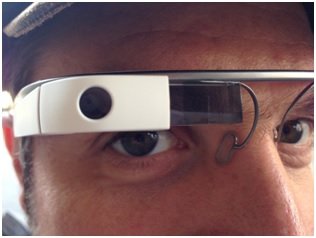
Image Source
The best way to make money is to meet the demands of the future. Getting behind the latest tech trends could see you on a six figure salary in years to come. But with so many new technologies constantly being developed, which ones are not fads and are likely to really make a difference.
Cloud technology
More and more people are seeing the benefits of freeing up their hard-drives and storing files on the cloud. More cloud servers are having to be built as a result, which is resulting in a demand for more cloud computing specialists both for manufacture, maintenance and marketing. As more and more of are files go cloud-based, it’s thought that hackers are soon going to turn their sights this way. Already these servers are extremely secure, but digital security will constantly need to be improved to stop cybercriminals catching up. Such industries are thought to earn megabucks in the future.

Image Source
Analytics
Data analysts (or data scientists) are already earning huge salaries. Their job is to take huge amounts of data – that previously not computer could deal with – and use them to better the productivity of a business. By analysing huge amounts of web traffic, data scientists can find the places and best places to target when marketing a specific product. Huge masses of financial data can be dissected to find the best way of cutting costs and making profit for a company. As more and more data becomes available, analysts are thought to become even more sought after in all trades.
Virtual and Augmented Reality
Virtual and augmented reality is the stuff of sci-fi movies, now brought to life and readily available in our homes through headsets such as the Oculus Rift. The military, surgeons and pilots are all already using VR as a safe training tool. Estate agents are already using VR to give virtual tours of homes that are for sale. The future of AR and VR is thought to be extremely lucrative and may be something worth considering for those with a creative mind.

Image Source
Robotics
We already have automated hoovers, self-service scanners and, most recently, self-driving cars. Robotics is thought to continue to take off – quite literally in some cases as NASA continues to build new robots to journey into space. AI is thought to permeate huge sections of everyday life by 2025, with many people losing their jobs to robotic processes. Being the creator behind the robots will secure your job for years to come.
The Internet of Things
‘The internet of things’ is the linking of various items and objects through the power of the web. Once upon a time, we could only access the internet through our PCs. Soon phones and TVs started to broaden our connectivity and now kettles, fridges and central heating is all being linked to the internet. More household items are thought to become connected so that we can control them from our phone. On top of this, ‘smart cities’ are thought to emerge. Internet linked traffic lights and train timetables will monitor public transport delays, weather warnings and traffic jams and react accordingly.

Oregon Trail Screenshot by The Pug Father from Flickr Creative Commons.
Digital gaming has come a long way since the days of Oregon Trail. Thanks to cloud computing and mobile devices, games pack in a lot more action and a lot less dysentery.
So what’s next for mobile cloud gaming? The answer: exciting things. Professors from the University of British Columbia and China’s Huazhong University of Science and Technology have teamed up to deliver their predictions about Mobile Cloud Gaming: the Next Generation.
1. Dynamic Cloud Integration
One of the biggest drawbacks of mobile gaming is the bandwidth required to execute complex visuals. It’s not such a big deal when you’re using a Wi-Fi connection, but over a cellular connection, data gets expensive. In a mobile browser game, heavy resource usage eats up battery life. Dynamic cloud integration finds a happy medium between bandwidth and battery by optimizing where game components run.
When it’s most efficient for game components to run locally, the cloud server onloads certain functions to the device. Dynamic cloud integration will provide ways for the mobile client the flexibility to offload functions back to the cloud. Meanwhile, both the cloud server and the device constantly monitor usage to deliver optimal resource usage. Players get better performance and longer periods of play.
2. Cross-Platform Gaming
Cloud computing already makes it possible to save games and play the saved game on a different device. Cross-platform gaming will improve to the point that switching from a desktop to mobile device becomes seamless.
In the future, every mobile game, as part of its standard feature set, will optimize saved games for different screen resolutions and device inputs. Online attackers will also learn to optimize malware for seamless transition within the gaming environment, making Android security more important than ever.
3. Context-Aware Gaming
With context-aware gaming, your mobile device uses its GPS, camera, accelerometer, and other elements to adapt an existing game to elements of your surroundings. Imagine sitting in the passenger seat and playing a simple game like Traffic Racer, in which you’re racing down terrain similar to the terrain surrounding you, or playing a game that changes based on multi-player inputs and the surroundings of different players.
Based on time of day, location, and your movements, your games will automatically deliver novel elements. A wave of your hand will release a magic spell. Game elements will respond to physical manifestations of your state of mind, like elevated heart rate and rapid breathing. One classic example of context-aware gaming is the 2003 release Mogi, which let players scavenger hunt for virtual objects within their existing physical environments.
4. Augmented Reality

Google Glass image by Michael Praetorius
Imagine donning your Google Glass and playing a hands-free game while seeing either a live or indirect view of the real world. If you’re coordinated enough, you’ll be able to play your game while walking to work — without walking into a lamppost.
Now, imagine walking to work and staring not at the people around you but at a gamified version of reality. For example, the game Human Pacman superimposes dots, power pellets, and scrumptious floating fruit within your normal field of vision. Your movements, including movements of your head, determine where Pacman goes next.
Augmented gaming, which incorporates many context-aware elements, will transform the world as you see it into a video feed. In a virtual sense, you’ll eventually be able to punch the person who cut in front of you at Starbucks — accompanied by your own theme music and a balloon that says “KAPOW!” — without moving anything but eye muscles.
5. Multi-Player Cloud Gaming
Desktop computers and consoles offer plenty of multi-player gaming opportunities. Games like Minecraft Pocket Edition allow players sharing a mobile LAN to interact within different worlds. As cloud gaming technology and streaming become more sophisticated, you’ll play mobile multi-player scenarios not only with the person sitting next to you but also with people all over the world.
All Hail the Future
Thanks to the cloud, mobile gaming requires only a thin client, has access to unlimited resources, and allows for seamless play across many devices. Next-gen cloud gaming advances will reduce network dependence, lower bandwidth consumption, and overcome limited mobile browser resources.
As cloud and mobile device advancements make gaming more immersive and less screen dependent, the whole world becomes a stage for a game. Let’s just hope when you catch dysentery in Future Mobile Oregon Trail, it’s not a context-aware development.
Oregon Trail Screenshot by The Pug Father from Flickr Creative Commons.
Woman using computer and mobile devices image by Antonio Guillem from Shutterstock.
Google Glass image by Michael Praetorius from Flickr Creative Commons.






